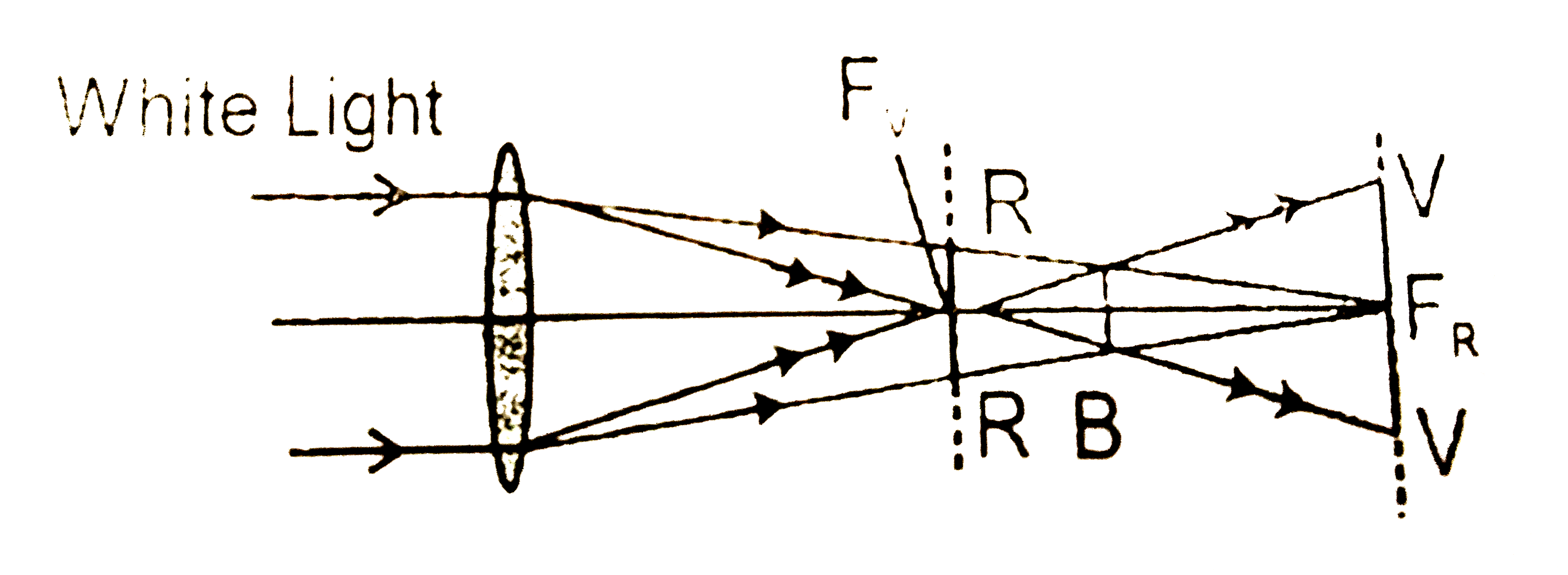Focal length of two lens arefandf′and dispersive powers are
ω0and 2ω0.To form achromatic combination from these-
(1)f′=2f,(2)f′=−2f (3)f′=−f/2
f'=2f
f'=−2f
f'=f/2
f'=−f/2
The correct Answer is:B
Step by step video, text & image solution for Focal length of two lens arefandf^(')and dispersive powers are omega_(0) and 2omega_(0).To form achromatic combination from these- (1)f^(')=2f ,(2) f^(')=-2f (3)f^(')=-f//2 by Physics experts to help you in doubts & scoring excellent marks in Class 12 exams.
Topper's Solved these Questions
Similar Questions
Focal length of two lens arefandf′ans dispersive powers are ω0and2ω0.To form achromatic combination from these-
(1)f′=2f,(2)f′=−2f (3)f′=−f/2View SolutionTwo lenses have focal lengths f1 and f2 and their dispersive powers are ω1 and ω2 respectively. They will together form an achromatic combination if
View Solution
Knowledge Check
- Question 1 - Select One
Focal lengths of two lenses are f and f' and dispersive powers of their materials are ω and ω'. To form achromatic combination from these, which relation is correct ?
Af' = 2fBf' = -2fCf' = f/2Df' = -f/2 - Question 2 - Select One
Focal lengths of two lenses are f and f' and dispersive powers of their materials are ω and ω'. To form achromatic combination from these, which relation is correct ?
Aω=ω0, ω'=2ω0, f'=2fBω=ω0, ω'=2ω0, f'=f/2Cω=ω0, ω'=2ω0, f'=−2fDω=ω0, ω'=2ω0, f'=−f/2 - Question 3 - Select One
Focal lengths of two lenses are f and f and dispersive powers of their materials are ω and omega^(')'. To form achromatic combination from these, which relation is correct?
Aω=ω0,2ω0,f′=2fBω=ω0,2ω0,f′=−2fCω=ω0,2ω0,f′=f2Dω=ω0,2ω0,f′=−f2
Two thin convex lenses of focal lengths f1 and f2 are in contact and coaxial. The power of the combination is
View SolutionThe image of a white object in with light formed by a lens is usually colored and blurred. This defect of image is called chromatic aberration and arises due to the fact that focal length of a lens is different for different colours. As R .I. μ of lens is maximum for violet while minimum for red, violet is focused nearest to the lens while red farthest from it as shown in figure.
As a result of this, in case of convergent lens if a screen is placed at Fv center of the image will be violet and focused while sides are red and blurred. While at FR , reverse is the case, i.e ., center will be red and focused while sides violet and blurred. The differece between fv and fR is a measure of the longitudinal chromatic aberration (L.C.A),i.e.,
L.C.A.=fR−fv=−df with df=fv−fR ...........(1)
However, as for a single lens,
1f=(μ−1)[1R1−1R2] .............(2)
⇒−dff2=dμ[1R1−1R2] ...............(3)

Dividing E1n. (3) by (2) :
−dff=dμ(μ−1)=ω,[ω=dμ(μ−1)]dispersive power,.........(4)
And hence, from Eqns. (1) and (4) ,
L.C.A.=−df=ωf
Now, as for a single lens neither f nor ω zero, we cannot have a single lens free from chromatic aberration.
Condition of Achromatism :
In case of two thin lenses in contact
1F=1F1+1F2i.c,.−dFF2=df1f21−df2f22
The combination will be free from chromatic aberration if dF=0
i.e.,df1f21+df2f22=0 which with the help of Eqn. (4) reduces to
ω1f1f21+ω2f2f22=0,i.e.,ω1f1+ω2f2=0........(5)
This condition is called condition of achromatism (for two thin lenses in contact ) and the lens combination which satisfies this condition is called achromatic lems, from this condition, i.e., form Eqn. (5) it is clear the in case of achromatic doublet :
Since, if ω1=ω2,1f1+1f2=0i.e.,1F=0 or F=∞
i.e., combination will not behave as a lens, but as a plane glass plate.
(2) As ω1 and ω2 are positive quantities, for equation (5) to hold, f1 and f2 must be of opposite nature, i.e., if one of the lenses is converging the other must be diverging.
(3) If the achromatic combination is convergent,
fC<fD and as fCfd=ωCωD,ωC<ωd
i.e., in a convergent achromatic doublet, convex lens has lesses focal legth and dispersive power than the divergent one.
A combination is made of two lenses of focal lengths f and f' in contact , the dispersive powers of the materials of the lenses are ω and ω' . The combination is achromatic when :View SolutionTwo thin lenses of focal lengths f1andf2 are in contact and conxial. The power of the combination is
View SolutionTwo thin lenses of focal length f1 and f2 are in contact and coaxial. The power of the combination is
View SolutionTwo thin lenses of focal lengths f1 and f2 are placed in contact with each other. The focal length of the combination is :
View Solution

